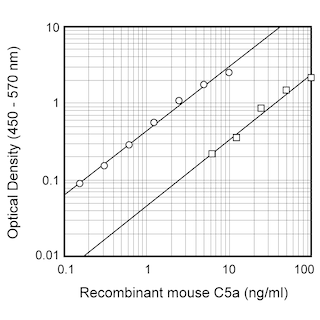-
抗体試薬
- フローサイトメトリー用試薬
-
ウェスタンブロッティング抗体試薬
- イムノアッセイ試薬
-
シングルセル試薬
- BD® AbSeq Assay
- BD Rhapsody™ Accessory Kits
- BD® OMICS-One Immune Profiler Protein Panel
- BD® Single-Cell Multiplexing Kit
- BD Rhapsody™ TCR/BCR Next Multiomic Assays
- BD Rhapsody™ Targeted mRNA Kits
- BD Rhapsody™ Whole Transcriptome Analysis (WTA) Amplification Kit
- BD® OMICS-Guard Sample Preservation Buffer
- BD Rhapsody™ ATAC-Seq Assays
- BD® OMICS-One Protein Panels
-
細胞機能評価のための試薬
-
顕微鏡・イメージング用試薬
-
細胞調製・分離試薬
-
- BD® AbSeq Assay
- BD Rhapsody™ Accessory Kits
- BD® OMICS-One Immune Profiler Protein Panel
- BD® Single-Cell Multiplexing Kit
- BD Rhapsody™ TCR/BCR Next Multiomic Assays
- BD Rhapsody™ Targeted mRNA Kits
- BD Rhapsody™ Whole Transcriptome Analysis (WTA) Amplification Kit
- BD® OMICS-Guard Sample Preservation Buffer
- BD Rhapsody™ ATAC-Seq Assays
- BD® OMICS-One Protein Panels
- Japan (Japanese)
-
Change country/language
Old Browser
Looks like you're visiting us from United States.
Would you like to stay on the current country site or be switched to your country?
BD Pharmingen™ Purified Recombinant Mouse C5a


Regulatory Statusの凡例
Becton, Dickinson and Companyの書面による明示的な許諾を得た使用以外での製品の使用は固く禁じられています。
Product Details
説明
Purified Mouse C5a is a recombinant protein. Anaphylatoxin C5a is a bioactive cleavage product released from plasma component C5 during complement activation and is involved in mediation of a variety of cellular immune responses, as well as being a potent pro-inflammatory agent. The release of this cleavage product is a reliable indicator of in vivo or in vitro complement activation. Mouse C5a protein was purified by affinity chromatography. This product can be reconstituted in 1 mL of Assay Diluent (Cat. No. 555213) or equivalent neutral buffer containing carrier protein, aliquoted into single-use aliquots and stored at -80°C. Avoid multiple freeze-thaws of the reconstituted protein. Each vial contains enough protein for ten 96-well plates. Failure to add carrier protein or store at indicated temperatures may result in a loss of activity. This product should not be diluted prior to long-term storage.
調製と保管タイトルテキスト
推奨アッセイ手順
Recombinant Mouse C5a protein is useful as a standard in a sandwich ELISA that measures mouse C5a protein levels in plasma or serum samples. Purified I52-1486 Anti-Mouse C5a (Cat. No. 558027) as capture antibody can be paired with the biotinylated I52-278 Anti-Mouse C5a (Cat. No. 558028) as the detection antibody, using recombinant mouse C5a protein as standard. The purified I52-1486 antibody should be titrated between 1-4 µg/mL to determine the optimal ELISA plate-coating concentration. To obtain linear standard curves, doubling dilutions of recombinant mouse C5a protein ranging from 78 pg/mL to 5 ng/mL are recommended for inclusion in each ELISA plate. Addition of FUT-175 (Futhan, Cat. No. 552035) to plasma samples at the time of sample collection provides additional protection from ex-vivo activation, and therefore ensures more accurate measurements that reflect the circulating levels of complement activation products. This ELISA antibody pair shows no cross-reactivity with the following: recombinant mouse C3a, native human, and rat C5a.
The amount of protein provided is listed on the vial label, record the batch number and the concentration of the reconstituted protein here and on the vial of the single-use aliquots for future reference:________ ng/mL.
Warning: Recombinant Mouse C5a (Cat. No. 622597) contains 0.02% (w/w) of a CMIT/MIT mixture (3:1), which is a mixture of: 5-chloro-2-methyl-4-isothiazolin-3-one [EC No 247-500-7] and 2-methyl-4-isothiazolin-3-one [EC No 220-239-6] (3:1).
Hazard statements
May cause an allergic skin reaction.
Precautionary statements
Wear protective gloves / eye protection.
Wear protective clothing.
Avoid breathing mist/vapours/spray.
If skin irritation or rash occurs: Get medical advice/attention.
IF ON SKIN: Wash with plenty of water.
Dispose of contents/container in accordance with local/regional/national/international regulations.
製品通知
- ProClin is a trademark of Rohm and Haas Company.
- Source of all serum proteins is from USDA inspected abattoirs located in the United States.
- Caution: Sodium azide yields highly toxic hydrazoic acid under acidic conditions. Dilute azide compounds in running water before discarding to avoid accumulation of potentially explosive deposits in plumbing.
- Please refer to www.bdbiosciences.com/us/s/resources for technical protocols.
データシート
コンパニオン製品




Development References (3)
-
Ember JA., Jagels MA., Hugli TE. Characterization of complement anaphylatoxins and their biological responses. In: J.E. Volanakis and M.M. Frank, ed. The human complement system in health and disease. Marcel Dekker, Inc; 1998:241-284.
-
Hugli TE. Structure and function of the anaphylatoxins. Springer Semin Immunopathol. 1984; 7:193-219. (Biology). View Reference
-
Volanakis, J.E. Overview of the complement system. In.: The human complement system in health and disease. In: J.E. Volanakis and M.M. Frank, ed. Marcel Dekker, Inc.; 1998:9-32.
Please refer to Support Documents for Quality Certificates
Global - Refer to manufacturer's instructions for use and related User Manuals and Technical data sheets before using this products as described
Comparisons, where applicable, are made against older BD Technology, manual methods or are general performance claims. Comparisons are not made against non-BD technologies, unless otherwise noted.
For Research Use Only. Not for use in diagnostic or therapeutic procedures.